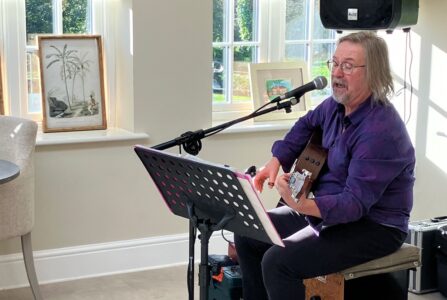If you have visited a care home (or have a friend or relative who lives in one) the activities programme may include ‘Reminiscence Therapy’. What is it, and how can it benefit older people? In this blog we’ll outline why remembering the past can help older people in the present and future.
What is Reminiscence Therapy?
Reminiscence Therapy is not a new thing; in fact, it has been around for over 60 years! It is sometimes known as ‘Life Review Therapy’ which is a good way to describe it – it involves recalling past experiences either individually or as a group. The discussions are usually prompted by music, images, objects, or topics (such as holidays or work).
Why is it useful?
There are many benefits to Reminiscence Therapy.
Firstly, it helps improve emotional wellbeing for the residents taking part. By recalling positive memories, such as holidays, weddings, or other happy occasions, feelings of depression and anxiety can be reduced. The act of participating in a discussion can also give residents a sense of accomplishment.
Secondly, Reminiscence Therapy can help residents to develop connections with other people. By sharing their experiences and stories, residents have ready-made topics of conversation and can also find things in common with others. These discussions can lead to greater understanding and closer relationships within the care setting, which in turn reduces feelings of loneliness.
Thirdly, by recalling and reviewing past events (both positive and negative) with people who may have similar experiences, residents can find that their satisfaction with their previous life increases. They may also be helped to come to terms with some of the more distressing events in their lives.
In addition to these emotional benefits, Reminiscence Therapy can have cognitive benefits too. Reminiscence Therapy uses long-term memories, and stimulating these in people suffering from short-term memory loss (such as those with dementia) has been shown to promote cognitive function.
Reminiscence Therapy Activities
Reminiscence Therapy can be included in a care home’s activities programme either as a standalone activity or as part of a different one.
Sharing memories can, as mentioned above, be done using prompts, and many care homes used ‘themed’ days to stimulate such discussions. For example, during the summer holding a ‘beach day’ may involve time spent outside (either at the home or at an actual beach) where residents share memories of previous seaside holidays with their families. Such days often include prompts such as buckets and spades, photographs, even a sandpit!
Musical performers can also stimulate memories in unofficial reminiscence sessions, especially those playing songs from the decades when they were young. Elliscombe House has a number of visiting musicians who fulfil this role.
In recent years technology has begun to play a role in Reminiscence Therapy, with Virtual Reality headsets offering residents the chance to experience life in previous years in 3D.
Here in Somerset, we are lucky to have a multi award-winning Reminiscence Therapy charity right on our doorstep. Reminiscence Learning was set up in 2003, with the aim of training care home staff and the general public in how to run reminiscence sessions.
Whether reminiscence sessions are formal or part of another activity, the act of remembering and sharing those memories can have benefits for residents which last beyond the session itself. At Elliscombe House, we are always glad to hear our residents’ memories and pleased that they feel able to share them with us.

